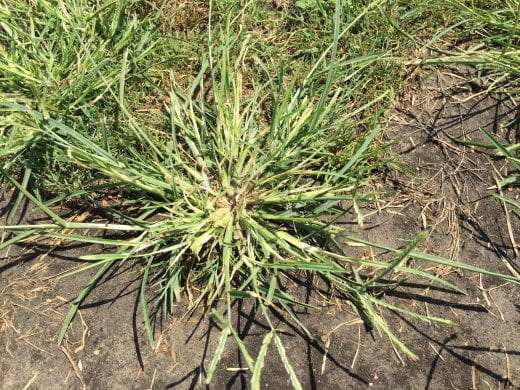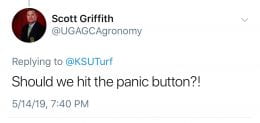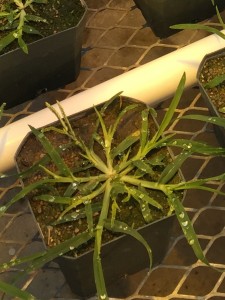This blog post was presented last year, but we’re approaching that time of year again when crabgrass and other annual grassy weeds are approaching emergence.

As a reminder, if you want more detailed information on weed control in general, consider getting this 2022 publication that was developed by several state universities, including K-State, and was led by Purdue: “Weed Control for Turfgrass Professionals”
Preemergence herbicide applications for crabgrass, goosegrass, foxtail, and other annual grasses are underway. Here are bullet points to consider to increase the efficacy of the herbicide you use.
Maintain turf density and mow higher. Good turf density resulting from proper cultural practices for the grass you’re managing reduces encroachment of all weeds, including annual grasses. Mowing at the higher end of the recommended range has consistently shown significantly lower populations of crabgrass and other annual grasses than mowing at lower mowing heights.
Apply before emergence. Not all annual grass species emerge at the same time. For example, goosegrass emerges later than crabgrass. However, even within a species, emergence of new seedlings occurs throughout spring and summer. With most preemergence herbicides, when seedlings have emerged, they will not effectively control those plants. However, the application will control emergence of grasses beyond that date. Dithiopyr (Dimension) does provide control of crabgrass that has emerged but has not begun to produce tillers.
Use effective strategies to guide application. Calendar dates, soil temperature, flowering of ornamentals, and other strategies are all used to help guide applications and maximize herbicide residual during the period annual grasses emerge. Here are a few articles related to this subject:
How Preemergence Herbicides Work and Why They Fail (Univ. of Nebraska)
https://blogs.k-state.edu/turf/methods-of-predicting-crabgrass-emergence/
https://blogs.k-state.edu/turf/flowering-ornamentals-and-crabgrass-emergence/
Apply uniformly. Uniform application is critical – just like distributing paint evenly over your house is aesthetically pleasing. If you leave a section of the house unpainted, it’s clearly visible. Good annual grass control requires uniform application; if an area is not treated, it’s likely you’ll seed weed emergence there. Uniform application is achieved by proper spreader or sprayer calibration, colorants that indicate areas that have been treated with liquid products, and applying the product in two directions (half rate in each).
Split applications. Some, not all, preemergence herbicides generally provide better suppression of annual grasses when applications are split (1/2 rate each application), usually 6 to 8 weeks apart. This allows a higher level of herbicide presence on the soil surface, which will minimize weed emergence. Here’s an article from Purdue on this subject:
https://turf.purdue.edu/wp-content/uploads/2012/06/15_AGRY_Patton_sequential20apps.pdf
Water in after application. For preemergence herbicides to be activated and ensure uniform distribution on the soil surface, irrigation (or rainfall) after application is needed.
Find more information on weed control by clicking on the tags on the blog (left column), such as “weed control,” “crabgrass,” etc., or search by category on the right side of the page.
***Mention of trade names or commercial products in this article is solely for identification purposes and does not imply recommendation or endorsement, nor is criticism implied of similar products not mentioned by Kansas State University.***
Don’t forget to follow the K-State Turf and Landscape Team on Twitter @KSUTURF
Also, visit our facebook page www.facebook.com/KSUTurf











